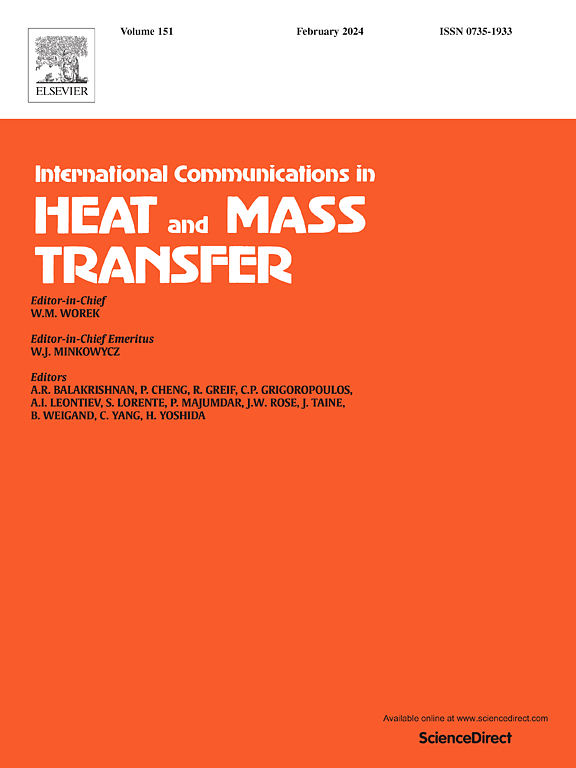Characteristics of local deposition of CaCO3 fouling on rough wall surfaces of heat exchanger channels
IF 6.4
2区 工程技术
Q1 MECHANICS
International Communications in Heat and Mass Transfer
Pub Date : 2025-02-20
DOI:10.1016/j.icheatmasstransfer.2025.108718
引用次数: 0
Abstract
The corrosion of the heat exchanger in the actual operation process will make the heat exchange wall rough, and the rough heat exchange wall will cause local fouling deposition in the channel. Based on the constructed local crystallization fouling model, this study compares the local fouling deposition of smooth channel and triangular roughness element channel, and analyzes the relative spacing of triangular roughness elements and the effect of different working condition parameters in detail. Results indicate that compared to smooth channels, triangular roughness elements significantly influence fouling deposition, appearing an extreme value in local fouling resistance. As the relative spacing decreases, the average value of the local fouling resistance initially decreases, reaching its minimum at a spacing of 0.125, before slightly increasing and stabilizing. For the average value of fouling resistance, the increase of inlet velocity or the decrease of calcium carbonate concentration will reduce it; an increase in wall temperature will increase it. Additionally, the thickness of the fouling layer decreases with increasing inlet velocity, decreases with lower concentration of calcium carbonate, and increases with rising wall temperature, both in the smooth zone outside the roughness element and in the roughness element affected zone.
求助全文
约1分钟内获得全文
求助全文
来源期刊
CiteScore
11.00
自引率
10.00%
发文量
648
审稿时长
32 days
期刊介绍:
International Communications in Heat and Mass Transfer serves as a world forum for the rapid dissemination of new ideas, new measurement techniques, preliminary findings of ongoing investigations, discussions, and criticisms in the field of heat and mass transfer. Two types of manuscript will be considered for publication: communications (short reports of new work or discussions of work which has already been published) and summaries (abstracts of reports, theses or manuscripts which are too long for publication in full). Together with its companion publication, International Journal of Heat and Mass Transfer, with which it shares the same Board of Editors, this journal is read by research workers and engineers throughout the world.

 求助内容:
求助内容: 应助结果提醒方式:
应助结果提醒方式:


